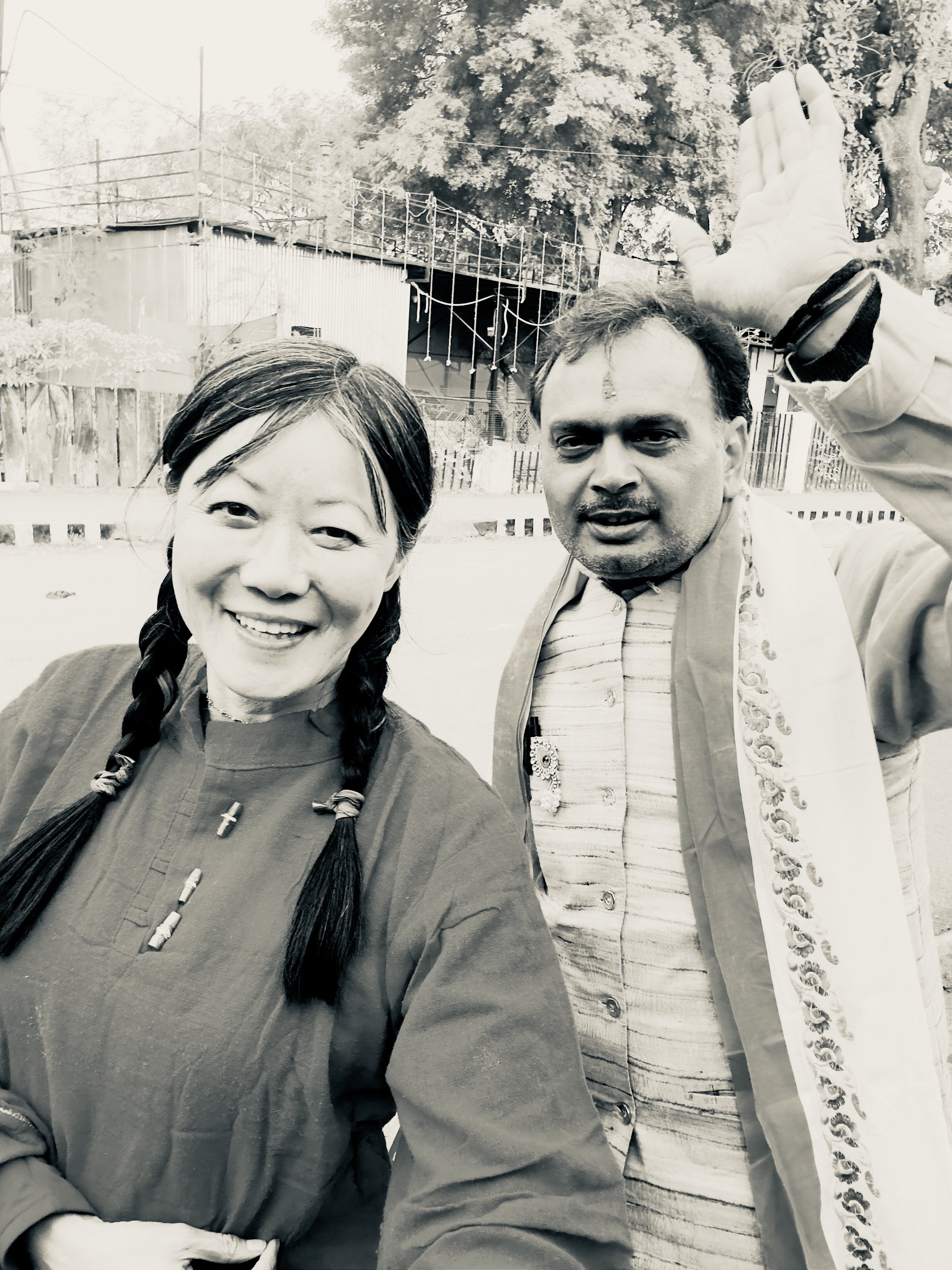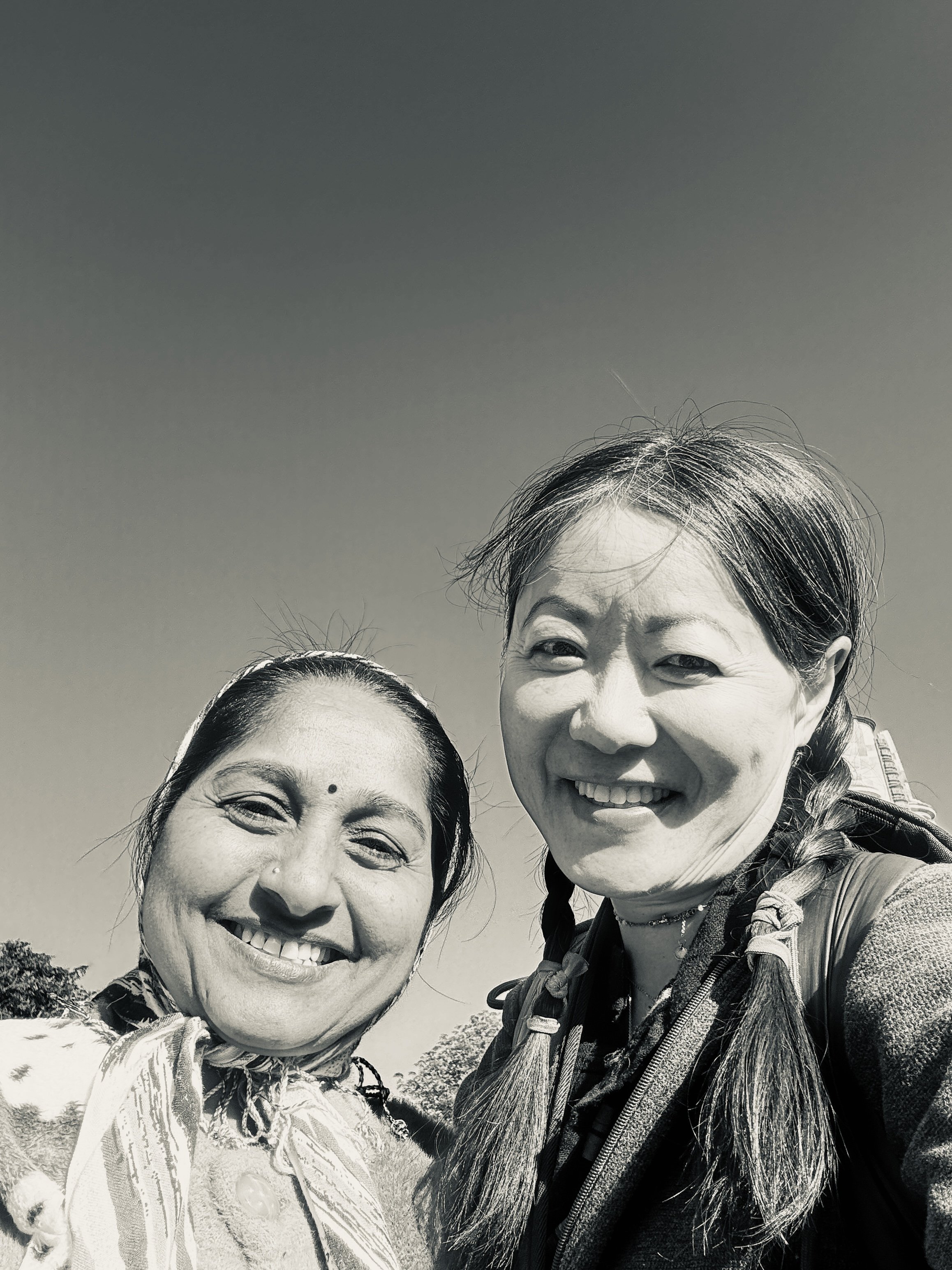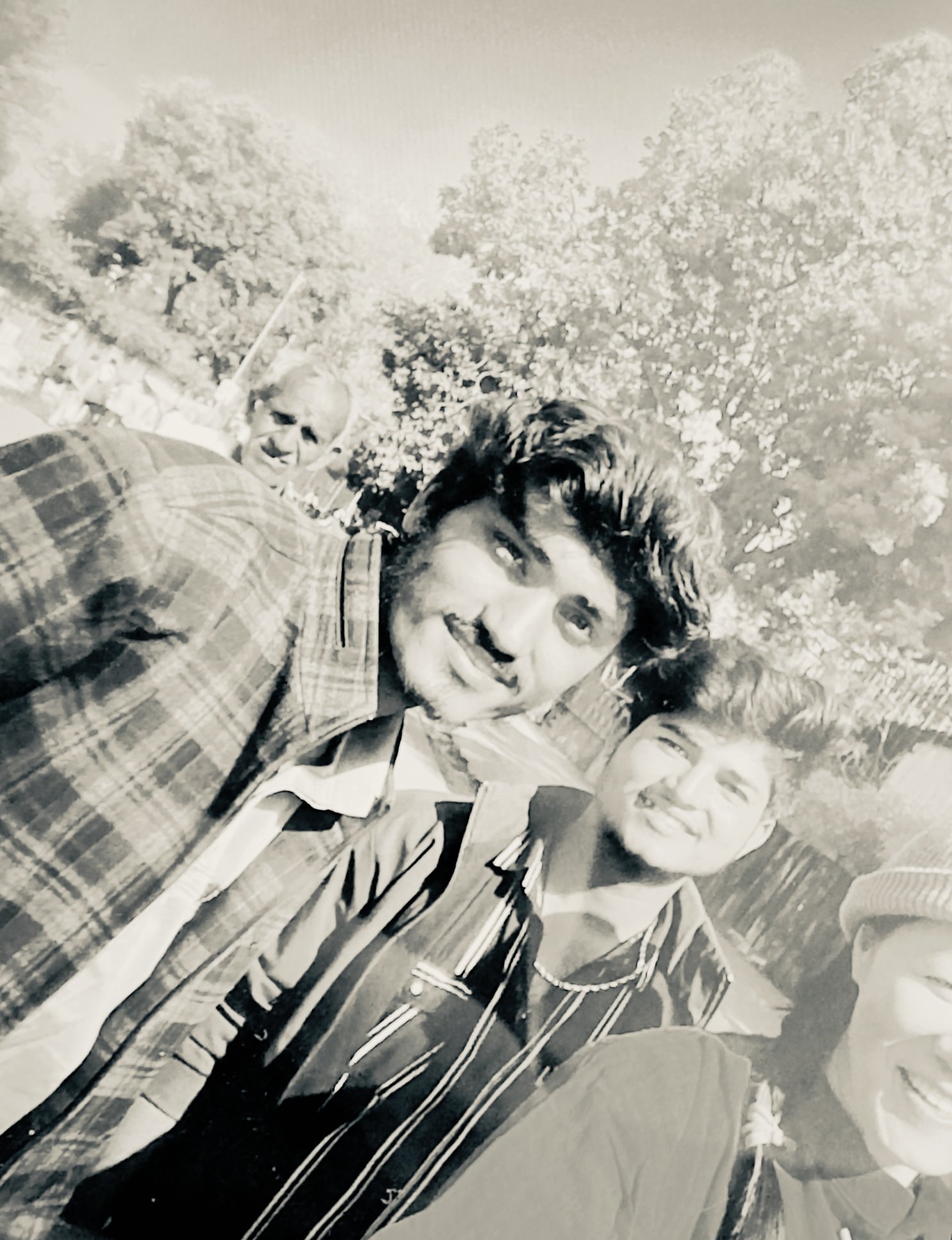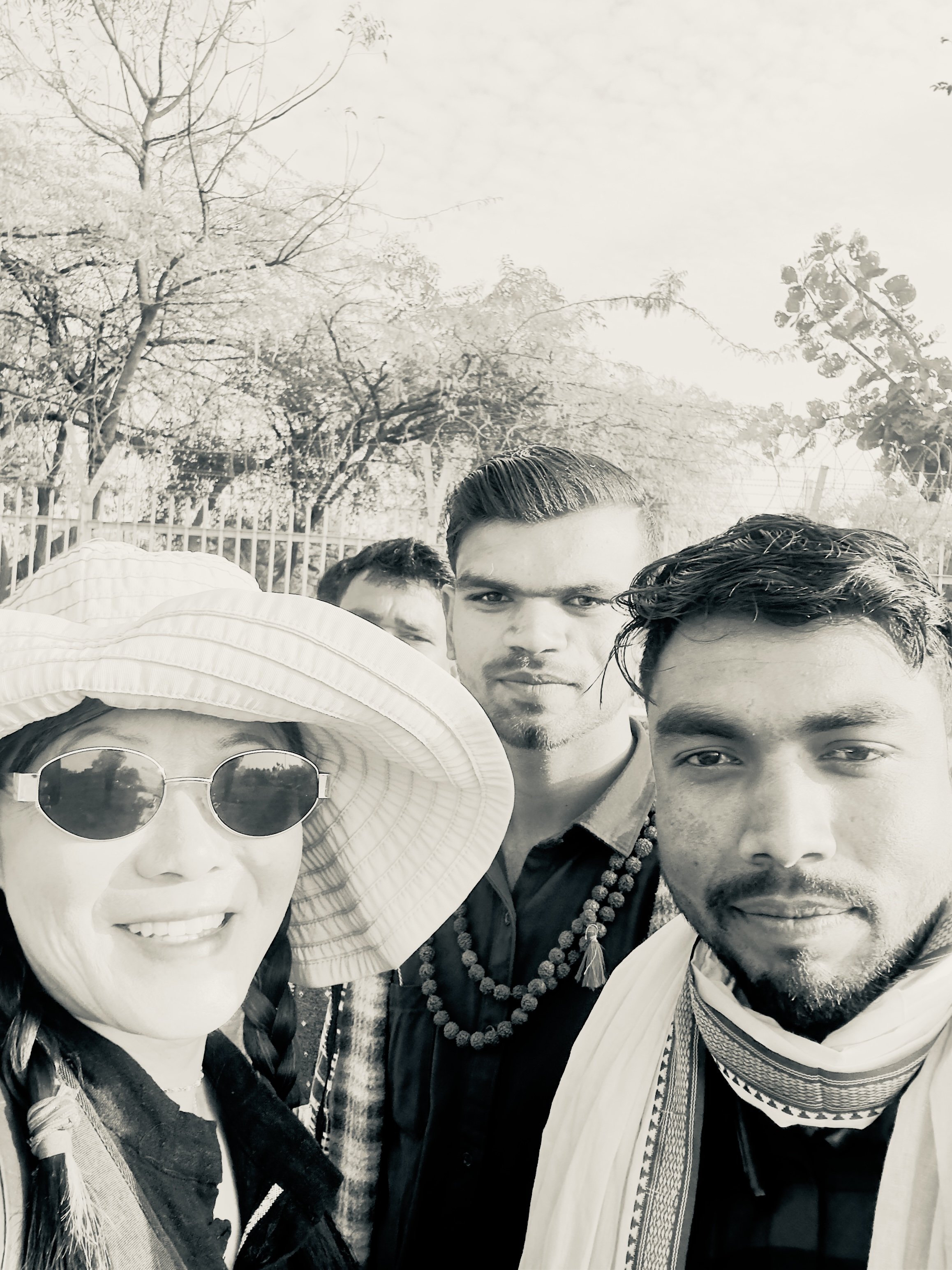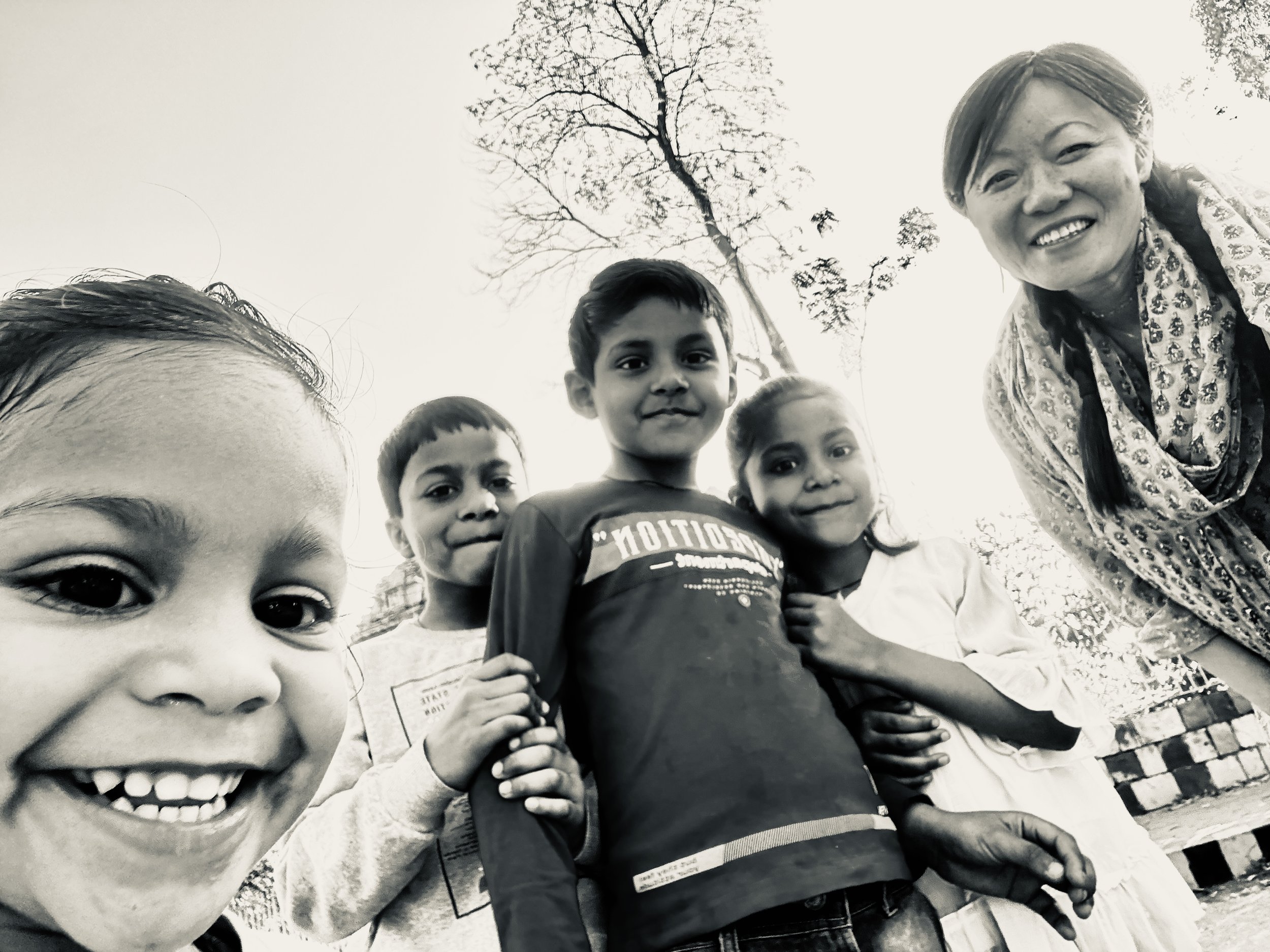Mei Xian Qiu
THE SELFIE PROJECT
The project began with a Selfie Station, resembling a modest local tourist shop, installed directly in front of the Khajuraho temples. The Station consisted of a bilingual sign in Hindi and English, a low-slung table and chair, a selfie mural, and a QR code linking to the ongoing Instagram archive: @selfiefriendskhajuraho. At the intersection of performance, photography, and social ritual, where the struggle towards selflessness met Western critiques of identity, and where postcolonial dynamics surface in the most banal, everyday gestures: the selfie.
The juxtaposition between carvings of mythic union and the rapid-fire snap of digital self-documentation became the conceptual seed of this work. There, I became the subject of dozens of unsolicited selfies, positioned in front of centuries-old iconography. By placing myself in quasi-iconic garb—red jumpsuit, pigtails, an aesthetic both referential and estranged—I deliberately othered myself. These gestures, staged eventually in landscapes across India, mimic the selfie ritual as a kind of cultural choreography, performed repeatedly in tourist sites, temples, and train stations. My intervention began when I asked for a selfie in return.
This reversal, while seemingly benign, disrupted an inherited colonial dynamic, where the foreigner is the exotic trophy, the passive object of the lens. When I requested the image, I shifted the frame. The person often complied, but the moment was often clipped, anxious, or incomplete. They were unsure what I would do with the photo. They hesitated because the rules of control changed. Whereas they spent long moments, even minutes, composing the Selfie they wanted to take, they rushed through the Selfie I requested from them.
This rupture was and is the center of the work.
The exchange excavated how deeply embedded the act of image-making was in systems of power, status, and desire. A selfie with a foreigner was not neutral—it was currency, a form of symbolic capital in a society negotiating its place between postcolonial pasts and globalized futures. But when mirrored, the act revealed its asymmetries. What seemed like a playful ritual revealed the structure beneath.
And yet—something else happened too. In that too brief moment of posing together, however mediated by screens or awkwardness, there was the possibility of connection. Many Selfie takers claimed this was a way of reaching a broader world. The connection was fragile, fleeting, but real. A spontaneous community formed in the shared act of seeing and being seen. This was not a deep intimacy, but a charged contact.
The image became a relic of momentary entanglement. A minor thread of global community-building, not grand or utopian, but made of glances, gestures, and mutual curiosity. Each photo was a collision of difference and sameness, of self and other.
—----------------------------
The Selfie Station extends this inquiry. What is a selfie? A plea for recognition? A mirror? A mask? An erasure? A communion? A recognition that the world is simultaneously real and illusory—a divine play (lila) enacted by consciousness itself. Shiva, both destroyer and creator, dances between form and formlessness. In this context, the selfie becomes a small enactment of that dance—a moment where identity is simultaneously asserted and dissolved.
These encounters—momentary and mediated—possibly mirror the Shaivite idea of ahamkara, the ego that must eventually be transcended. Each image performs the self, but also hints at its artifice. The act of asking for and offering a selfie becomes a miniature ritual of ego and release, of embodiment and disappearance.
—----------------------------
The Selfies exhibit not only the mechanics of visual culture but also the ethics of attention. What does it mean to truly look at another person, not as a symbol, stereotype, or exotic object, but as a co-creator of an image? What does it mean to share space, even briefly, in a world increasingly divided by screens and borders?
These images are not documents. They are offerings.













































































